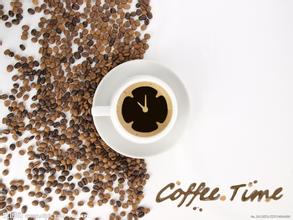The origin of how to choose coffee beans
Dripping coffee, also known as Dutch coffee, originated in Europe. The dripping pot for brewing was invented by an archbishop in Paris.
It uses cold water or ice water to extract, adjust the droplet speed by natural osmotic water pressure, and extract at a low temperature of 5 ℃ for 4 to 10 hours for a long time.
Coffee
Coffee
Let the original coffee taste reappear naturally by fax.
The advantage of water drop coffee is not sour and does not hurt the stomach, because using this method to make coffee, most of the coffee beans selected are deep-roasted coffee beans such as Mantlin, because of "shallow roasting but sour, deep roasting bitter but strong". Water drop coffee is another reason why deep-roasted coffee beans are not sour and deep-roasted coffee beans can be diluted with ice after being made, so deep-roasted beans must be selected to filter so as not to be strong enough. The reason why the taste of waterdrop coffee is not astringent is because of the use of cold water. Other coffee brewing methods often use hot water, while hot water with too high temperature will break down some chemicals in the coffee and release astringency, while the dripping coffee is completely filtered with cold water, and the coffee is 100% soaked and wet. the extracted coffee tastes smooth but not sour. Another key to the success or failure of dripping coffee is the dripping speed. With a slow dripping rate of 10 seconds and seven drops, the water and coffee powder have a longer fusion time, so the coffee taste is more saturated; if the dripping time is too fast, the taste is too light, and at the same time, it will produce stagnant water spillage, on the contrary, too slow will cause the coffee to ferment, produce sour taste and wine taste.
In order to avoid fermentation and maintain flavor, the drip iced coffee must be refrigerated and kept at room temperature for no more than 8 hours. if you need to heat up and drink, you can directly heat it, but be careful not to let the coffee boil when heated. Should prepare utensils: water drip kettle
Suitable for coffee beans: deep baked beans or Dutch iced coffee beans
Coffee powder consumption and grinding scale: grinding 2: 1.5 in 30g/
Brewing method:
⒈ put the amount of coffee powder calculated according to the number of people into the drip and gently squeeze it, then pour in a small amount of water to soak it all.
⒉ puts drips on the beaker and pours water into the trough of the beaker. (about 300-350 cc for three people).
The ⒊ lid is closed. It takes different time to make coffee depending on the condition of different utensils.
⒋ hopes that when drinking coffee, remove the lid, bucket trough and drip, pour it into the beaker and add fire, so as not to pour the boiling degree into the cup.
Orebing
Ole iced coffee is an espresso made from Italian steam, served with appropriate sugar and a glass filled with ice. Put
Coffee powder
Coffee powder
The coffee, which has already put sugar, is slowly poured into the glass, and the light gray flows slowly in the white ice cubes. A cup of cool and mellow Ole iced coffee was born in this way. This kind of coffee does not need to add too many things, and its coolness is like the independence of a lonely and proud family. In their spare time, people from the lonely and proud family will make a cup of Olei iced coffee alone in their own home, and then watch the ice dissolve lonely in the coffee.
Production method (for two)
⒈ uses 16g coffee powder and 260cc water to make espresso in Italian steam.
You can also get espresso by brewing 40g coffee powder (non-Italian brewing utensils) with 120cc water.
⒉ first add the appropriate sugar to the espresso, then prepare two glasses and fill them with ice.
⒊ slowly pours the pre-brewed espresso into the glass and stirs well.
⒊ slowly add fresh milk (fresh cream is also OK) according to your personal preference, and you can enjoy a cup of cool and mellow Orei iced coffee.
Greek coffee
Cubita Coffee
Cubita Coffee
Greek coffee or Turkish coffee is not common in Taiwan, and its taste can be divided into three flavors: Skaito, Metrio and Gligi. Its cooking method is mainly to use a stainless steel pot called Briki to grind the coffee powder very fine and cook it directly in the pot until it boils, then turn off the fire and pour it all into the cup. Greeks drink coffee, the residue is not cut off, because the coffee is ground very fine, so when tasting, most of the coffee powder will be deposited at the bottom of the cup, but when drinking, you can still drink some fine coffee powder. This is also the most important feature of Greek coffee. Another feature of Greek coffee is that when you drink it, you don't add any cream, and when you cook coffee, you add some sugar first, and the amount of sugar is mainly according to your personal preference. Some people like to drink bitterness without adding sugar at all, while others prefer a sweeter taste.
In addition, in order to really taste the unique taste of Greek coffee, intimate boss, will also be accompanied by a cup of ice water, before drinking Greek coffee, it is best to drink a mouthful of ice water, so that the taste of the mouth, to the most sensitive degree, and then you can slowly experience the slightly sour Greek coffee, but also with a bit of bitter feeling!
Coffee divination editor
Method
Ordinary coffee cannot be used for divination, because coffee divination, mainly after drinking coffee, predicts good or bad luck with the remaining residue, shape or pattern, so only Greek coffee or Turkish coffee can be used for divination. Coffee
Coffee beans
Coffee beans
The principle of brown divination is to watch the patterns formed by the residue after drinking coffee to predict things, similar to the Rosa ink stain test in psychology. This kind of divination can be carried out by yourself, or you can find a coffee diviner who specializes in divination for yourself. In Greece or Turkey, coffee diviners who specialize in answering questions are often found in coffee shops.
Origin
Coffee divination, also known as "Greek coffee divination" or "Turkish coffee divination", is also popular in countries once ruled by the Ottoman Turkish empire. However, since there were many disputes between Turkey and Greece in the past, if you come to Greece, don't say you want a cup of Turkish coffee, otherwise you will get two white-eyed beads.
The Greek people, who like divination and fortune-telling, have contributed to the development of philosophy, astrology, numerology and astronomy because of their curiosity about "fate". The Greeks believed that everyone's daily luck
It is different, sometimes good luck, sometimes bad luck, so it also gives rise to some special divination methods to predict the future, plus the Greek people, the history of drinking coffee is quite early, so over time, coffee divination appeared.
In addition, there is a saying that, because the Turks are a more hospitable and warm nation, they all entertain guests warmly, and in order to keep the guests for a while after they have had enough to drink and eat, they discovered that coffee divination after dinner can be used to gossip and gossip, and from then on, the art of predicting good and bad luck with coffee residue appeared.

Important Notice :
前街咖啡 FrontStreet Coffee has moved to new addredd:
FrontStreet Coffee Address: 315,Donghua East Road,GuangZhou
Tel:020 38364473
- Prev

Three common coffee brewing methods common coffee
There are many kinds of coffee beans [1] after baking and roasting [2]. Coffee powder is ground into powder, which can be directly brewed or boiled. According to grinding, it can be divided into rough grinding, medium grinding, fine grinding and ultra-fine grinding: rough grinding: grinding degree: similar to general black pepper powder size grinding: grinding degree: gravel fine grinding: grinding degree: as big as fine sand
- Next

Coffee species introduction Coffee Tree introduction Coffee planting method
Arabica was the only kind of coffee beans, then in the 19th century, there was a large area of diseases and insect pests, coffee growers began to look for other varieties of coffee resistant to diseases and insect pests, so Rob's special was discovered and began to be planted artificially. Robert's special growth in low-altitude areas, characterized by resistance to diseases and insect pests, cold, drought resistance, a word description, thick, but the taste is relatively comparative
Related
- Does Rose Summer choose Blue, Green or Red? Detailed explanation of Rose Summer Coffee plots and Classification in Panamanian Jade Manor
- What is the difference between the origin, producing area, processing plant, cooperative and manor of coffee beans?
- How fine does the espresso powder fit? how to grind the espresso?
- Sca coffee roasting degree color card coffee roasting degree 8 roasting color values what do you mean?
- The practice of lattes: how to make lattes at home
- Introduction to Indonesian Fine Coffee beans-- Java Coffee producing area of Indonesian Arabica Coffee
- How much will the flavor of light and medium roasted rose summer be expressed? What baking level is rose summer suitable for?
- Introduction to the characteristics of washing, sun-drying or wet-planing coffee commonly used in Mantenin, Indonesia
- Price characteristics of Arabica Coffee Bean Starbucks introduction to Manning Coffee Bean Taste producing area Variety Manor
- What is the authentic Yega flavor? What are the flavor characteristics of the really excellent Yejasuffi coffee beans?

